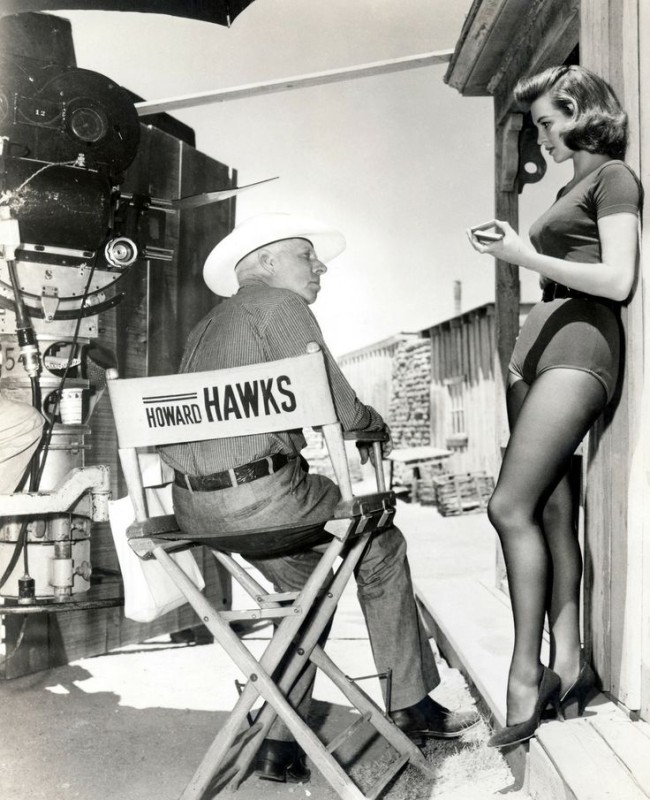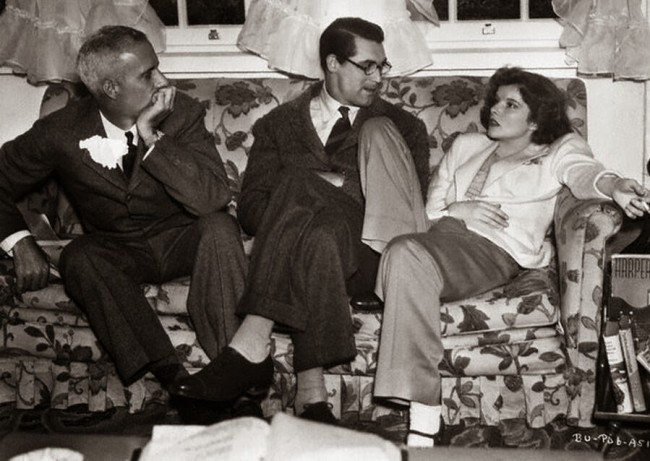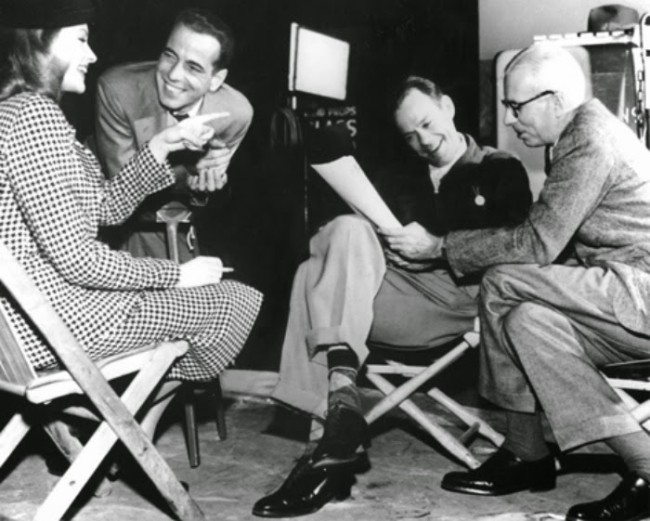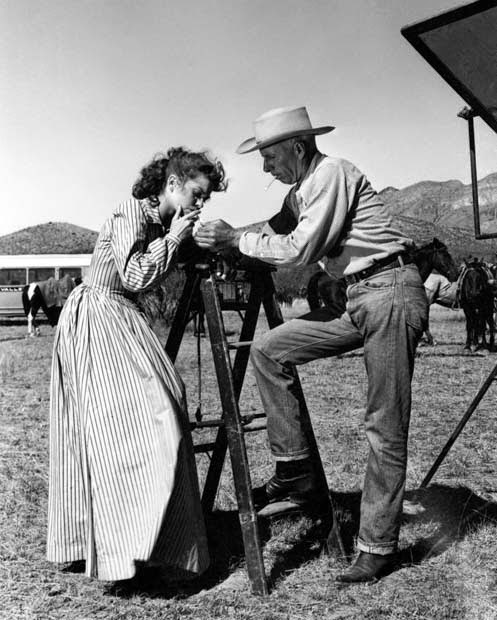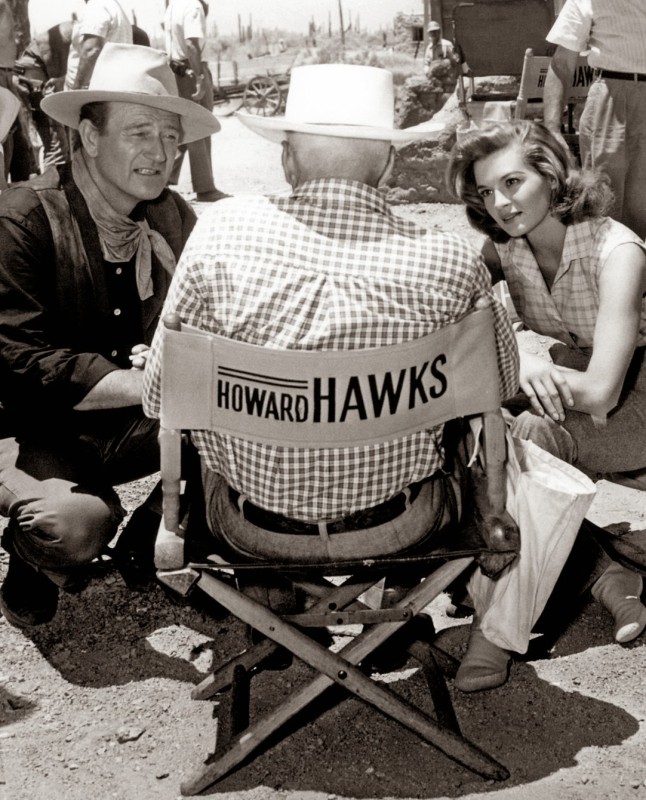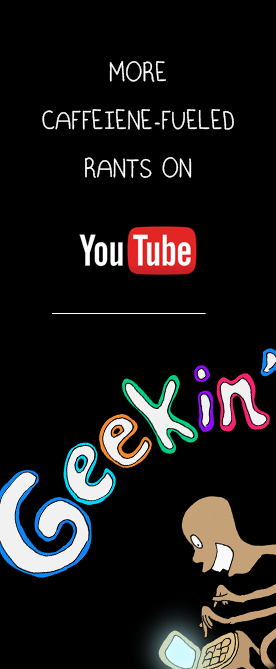Howard Hawks is the man. This is a director who mastered every genre he ever tackled, a director responsible for some of the finest performances in the careers of legends like Cary Grant, Humphrey Bogart and John Wayne. More importantly Hawks was one of the essential early filmmakers who embraced the use of dialogue when Hollywood was still struggling with its awkward transition out of the silent era. Hawks loved the written word and frequently collaborated with powerhouse writers such as Dudley Nichols, Ben Hecht, Jules Furthman, Leigh Brackett and William Faulkner. Looking back at pictures of the man in action, a recurring scene is Hawks sitting in a circle with his cast working on the dialogue until it absolutely shined. Ever since I almost choked from laughter while watching “Bringing Up Baby”, I’ve spent a lot of time hunting down every documentary and book about Howard Hawks that I can find. I can honestly say I have nothing new to contribute that has not already been said far more persuasively by his many admirers such as Jean-Luc Godard, Peter Bogdanovich, and Quentin Tarantino. Be that as it may, there’s always someone out there who has not yet been exposed to his work. So this post is not meant to be a comprehensive guide to his career at all but rather a useful introduction highlighting my favorite films by the Grey Fox of Hollywood.
Scarface (1932)
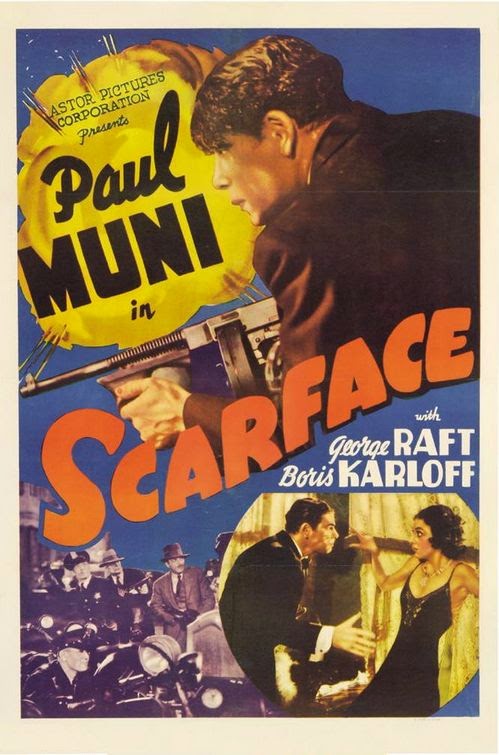
Brian De Palma’s remake of “Scarface” starring Al Pacino is one of my favorite movies, but the roots of that movie begin here with this classic Prohibition era epic about the meteoric rise and fall of Tony Camonte played by Paul Muni. 80 years after its release, Tony’s incestuous preoccupation with his wild, thrill-seeking sister is just as fascinating to watch.
Twentieth Century (1934)

One of the funniest films I have ever seen, “Twentieth Century” showcases the talents of the great John Barrymore probably better than any other film. He plays a once great, but now down-on-his-luck theater director named Oscar Jaffe. Jaffe is hellbent upon reuniting with his greatest discovery and former lover, now a major star played by the divine Carole Lombard, to perform in his next production. Insanity ensues.
Bringing Up Baby (1938)
“Bringing Up Baby” was the first film by Hawks I ever saw and it remains my personal favorite of his filmography. Cary Grant and Katharine Hepburn were never better and the movie is probably the finest example of the classic screwball comedies of the 1930s. Some of my friends have complained about feeling as if they are losing their minds while watching this movie. They’re absolutely right. The movie is completely insane.
Only Angels Have Wings (1939)
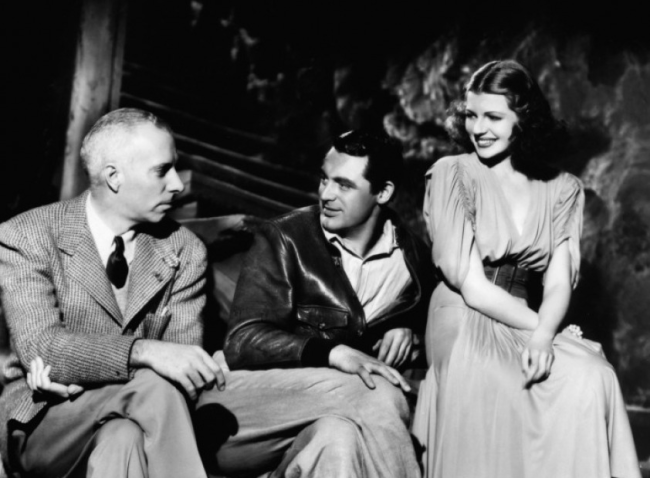
Howard Hawks loved the world of cars and planes, particularly in environments where one’s professionalism or lack thereof could mean the difference between life or death. This was a lifelong preoccupation covered in a variety of movies such as “The Dawn Patrol” (1930), “Air Force” (1943), “Hatari!” (1962) and “Red Line 7000” (1965). The best of these movies is “Only Angels Have Wings”. In a remote region of South America, Cary Grant runs a small airline devoted to delivering mail across a dangerous mountain pass, a pass responsible for the death of many of his fellow pilots. The camaraderie and cool sense of detached fatalism shared by Grant and his pilots in this story is a thing of beauty to behold.
His Girl Friday (1940)
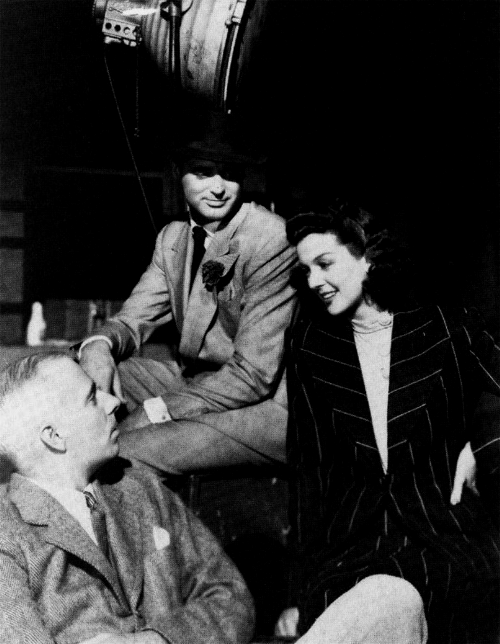
Often described as the fastest screenplay ever written, this adaptation of the play “The Front Page” is best example of the overlapping dialogue Hawks was famous for. Hawks swapped out one of the male lead roles of the play for a woman and the result is sheer bliss. Arguably the best film he ever made, “His Girl Friday” makes most contemporary films feel like they’re standing still.
To Have and Have Not (1944)
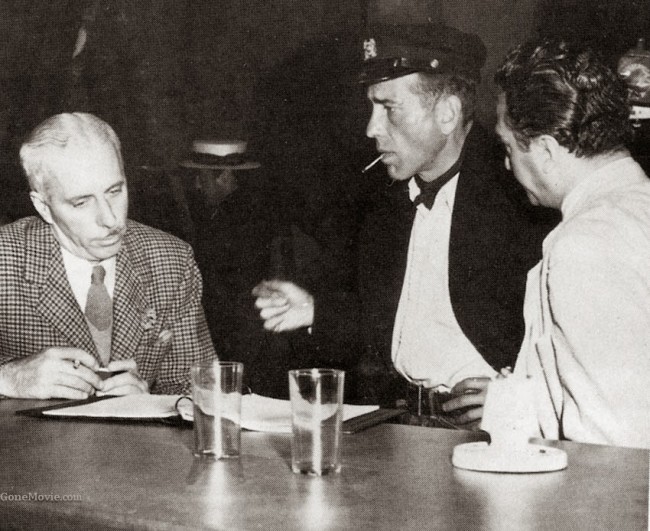
Hawks claims that he made this movie due to a bet with Ernest Hemingway that he could make a hit from Hemingway’s worst novel. Whether or not this tale is true, I have no idea. Hawks was known to indulge occasionally in tall tales that built up his mystique and reputation, nonetheless, the movie Hawks made is a classic. “To Have and Have Not” gave Hollywood arguably their most enduringly popular power couple in movie history, Bogie and Bacall. Over the several films they made together they became Hollywood royalty and they were never better than in this remarkable movie. Over the last 70 years many actresses have tried to recapture the essence of cool Bacall perfectly embodies in this movie. They have all failed utterly.
The Big Sleep (1946)
On the surface “The Big Sleep” is a complicated plot-driven adaptation of one of Raymond Chandler’s novels about detective Philip Marlowe with all the ingredients for a classic film noir. In actuality, the movie is just an excuse for a lot scenes of Bogie and Bacall lighting each other’s cigarettes and talking about sex. These are the best scenes in the movie, a movie that shatters all the rules about story construction relying more on emphasizing great scenes of dramatic tension. The opening credits are beyond cool. After watching a silhouette of Bogie and Bacall lighting up, the camera follows their cigarettes down to an ash tray where they remain nestled side by side for the duration of the opening credits. Classic stuff. Hawks often spoke about the confusion shared by him, his screenwriters and author Raymond Chandler when discussing the details of the convoluted plot of “The Big Sleep”. I’ve seen this film more times than I can count and I still lose track of what’s happening about 15 minutes into the movie. So forget the plot, sit back and enjoy a movie that perfectly embodies the Golden Age of Hollywood.
Red River (1948)
“Red River” was the first western directed by Howard Hawks and suffice to say that if Hawks had never made another movie, this gem would still go down as one of the finest westerns ever made. John Wayne had already appeared in many great movies directed by John Ford but this was the first film where the Duke really got to show his range as an actor as the megalomaniacal Thomas Dunson. We also have Montgomery Clift as his adopted son and eventual rival, in a part where he gives as well as he gets in spite of Wayne’s early concerns that Clift wouldn’t be able to keep up with him on screen. Hawks never earned a reputation as a great visual stylist, his setups were pretty functional and economical, but in “Red River” Hawks really opens up his canvas and crafts a true cinematic epic. This is the only film by Hawks that consistently gives me chills each time that I see it. Peter Bogdonavich paid the highest compliment possible to Hawks with the following scene from his movie “The Last Picture Show” where “Red River” plays one final time.
Rio Bravo (1959)
At last we come to the movie most diehard Hawks fans regard as his masterpiece, “Rio Bravo”. I can’t argue with that assessment. In “Rio Bravo”, John Wayne plays a small town sheriff, John Chance, besieged by a corrupt rancher and his army of hired guns. On John Wayne’s side, he has a cripple, the town drunk, and a baby faced kid. The rest is movie history. Throughout almost all of his movies, Hawks places a huge emphasis on the importance of being good at what you do, being a professional. In “Rio Bravo” this preoccupation is central to the plot (what little of it there is) as Sheriff Chance struggles to insulate himself from being helped by any well meaning amateurs who in his opinion will likely just get themselves killed. Director Walter Hill once described “Rio Bravo” as the film that best expresses Hawksian values. We see this phenomenon at work in the character of Dude aka Borachón, played by Dean Martin in the role of a lifetime. At one time Sheriff Chance’s partner, Dude is now a drunken disgrace who must slowly fight out his way out of the bottle in order to give Sheriff Chance the type of solid, dependable help that Chance so desperately needs. “Rio Bravo” often feels like a comedy with cowboy hats, where the story can suddenly explode with violence leaving anyone who isn’t good enough dead on the ground. On lazy Sundays where I find myself too hungover to function, this is the medicine that I’ve reached for more than any other and it works every time.
I got a little carried away with this post but once I get started on Hawks, it is difficult to know where to stop. My hope is that this list will make its way in front a young film fan interested in getting a taste of Howard Hawks. I’ve left out many worthy movies such as “Sergeant York”, “Air Force”, “I Was a Male War Bride”, “Monkey Business”, “The Thing from Another World”, “Gentlemen Prefer Blondes” and “El Dorado”, but I felt it was important to stay focused on my personal favorites. So if you are venturing into the world of Howard Hawks for the first time I envy you. He is a genuine original with body of work unlike any other in film history.
I’ve included below a great documentary about the career Howard Hawks. Sadly my favorite, “Howard Hawks: American Artist”, is not available right now in any format other than VHS.
I am one of the Co-Hosts of Wrong Reel and you can find our content here:
Check Us out on Stitcher radio

